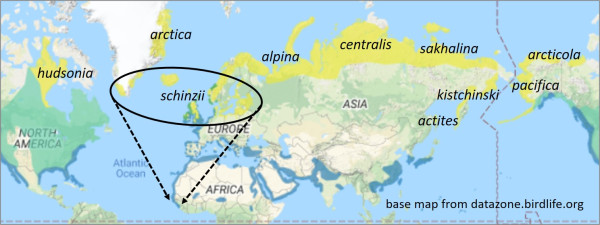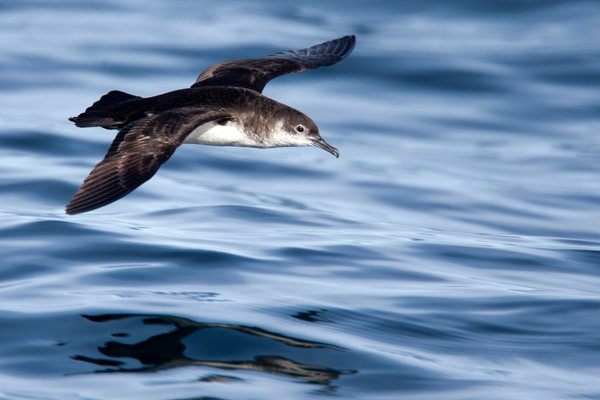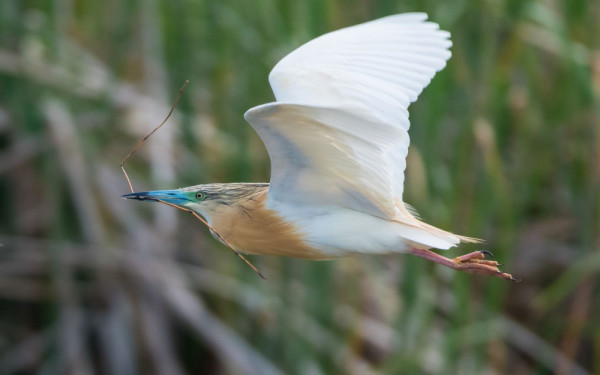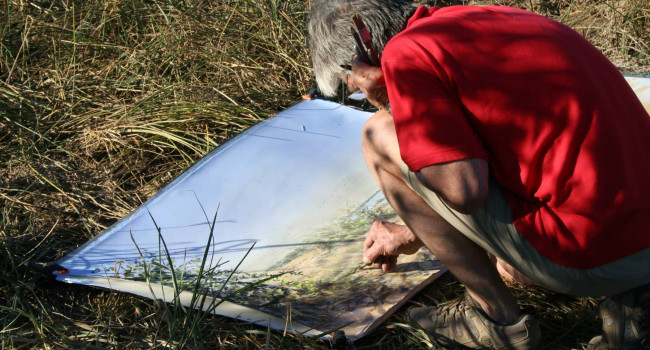
BirdTrack migration blog (mid-June- mid-July)
Scott’s role includes the day-to-day running of BirdTrack: updating the application, assisting county recorders by checking records and corresponding with observers.
Relates to projects
As we reach the halfway point of the year, migration has slowed dramatically but the breeding season continues apace.
June and July are the quietest months of the year for migration: summer visitors have already arrived during the last couple of months, and it is still several weeks before they depart for the winter and are replaced by a whole raft of visitors either arriving for the winter or passing through Britain and Ireland on their way to wintering areas. That said, migration hasn't stopped altogether, and it can in fact be difficult at this time of year to know if a particular bird is a late summer migrant or an early autumn migrant. Not all birds breed in their first year, so some of the migrants we see during mid-summer can be young birds going through the motions of migrating to breeding grounds, but not actually finding a partner and raising chicks. It is also the case that, at this time of year, failed breeders can abandon their breeding grounds and start to head back to areas where they will spend the winter months. In the case of species such as Spotted Redshank, the females leave the raising of offspring to the males, and can be seen in late June in the UK as they stop off on their way south.
Swallows, House Martins and Swifts have very much been in the news this spring, as lower numbers of birds have been reported than in recent years in several locations. The cold start to April coupled with heavy rain across Southwest Europe certainly delayed their arrival, but the recent warmer weather has seen reports climb back to usual levels. Both Swallows and House Martins regularly have two or sometimes three broods each year, let's hope this year is productive and numbers can bounce back quickly.
Swifts were less affected by the cold weather in April as they traditionally arrive a month or so later, however, like Swallow and House Martin, many people are reporting fewer birds this year. After a slow start there was a good arrival of Swifts at the end of May with the BirdTrack reporting rate showing a rise in reports similar to last year and the reporting rates are now very similar to the levels over the last couple of years.
Since the last migration blog there have been a few scarcities reaching our shores with the first Bridled Tern for the Channel Islands, Spotted Sandpiper in Norfolk, Collared Pratincole, in Devon, the returning male Least Tern in Co. Dublin , and a scattering of Rose-coloured Starlings.

Species focus - Dunlin
by Graham Appleton (author of the WaderTales blog)
The end of June marks the start of autumn migration, as far as waders are concerned, with the first failed British breeders moving to the coast and the arrival of birds from further afield. Some of the first flocks will be of Dunlin – an underappreciated species with a new ‘Red List’ label and a complicated migration pattern.
Three subspecies of Dunlin are seen in the UK; our winter birds are alpina, our breeding birds are schinzii and we see passage birds that are both arctica and schinzii. The first birds of ‘autumn’ turn up in late June and early July, mainly on the east coast and not in the numbers they once did. Ringing tells us that these ginger-backed summer plumage birds have largely come from around the Baltic coast. Once they have fattened up, they will move on to west Africa to moult and spend the winter. The earliest birds will be failed breeders, females that have helped with the early guarding of chicks will be next, and males will be last. Juveniles will pass through much later. These Baltic birds have suffered severe declines in the last forty years, with numbers dropping by over 80%. This is thought to be due to a mixture of local issues, such as tidal inundation and predation, and problems in West Africa that could also be affecting our UK breeders.

It is generally accepted that there are ten races of Dunlin. The passage of schinzii Dunlin overlaps with the arrival of the first alpina from Siberia and northern Scandinavia. These are the Dunlin that will spend the winter in western Europe. They are bigger than schinzii, with longer bills. In summer plumage they have darker bellies and their back feathers are more chestnut than ginger. Large numbers gather in key moulting sites such as the Wash, East Anglia from July onwards, with many birds moving further west in late autumn, as picked up by inland Nocturnal Migration recorders.
If you are lucky, a flock of Dunlin seen in July might include a summer plumage Curlew Sandpiper or a tiny Little Stint.
Dunlin was one of two waders added to the UK Red List in 2021, the other being Purple Sandpiper. Although there are real concerns about the number of breeding schinzii, the ‘promotion’ from the Amber List is based on winter declines. Across the UK, Wetland Bird Survey counts of alpina Dunlin are only 40% of what they were in 1975. There is a theory that, as winter conditions on the continental side of the North Sea have become less harsh, new generations of juvenile alpina have settled in countries such as the Netherlands, instead of continuing their southwesterly migrations from northern Russia.
When you see a flock of Dunlin in late July, it’s worth checking them over; if you are lucky they might include a summer plumage Curlew Sandpiper or a tiny Little Stint. The WaderTales blog Which, wader, when and why summarises the migration patterns of over 40 other species.

Looking ahead
As we look towards July, the pace of migration will continue to be slow. However, the first returning waders will start to make an appearance with Spotted Redshank and Green and Common Sandpipers the first to arrive. Numbers of Little Gull will also increase as we head as adults, often still sporting their ink-black hoods, are joined by this years young, with the notable black 'W' across the wings. Tern roosts are also worth checking at this time of year for a Roseate Tern: look for the whiter plumage compared to Common and Arctic Terns as well as an all-dark bill.
Summer can be a good time to look for Manx Shearwater as they wander around the coasts of Britain and Ireland, away from their traditional haunts. These can be joined by Balearic Shearwaters, a critically endangered species that breeds in the Mediterranean but starts to appear off our south-western coasts from July onwards.

Swifts can also be seen in growing flocks in the next few weeks. As yet we don’t really know what these birds are doing; they could be failed breeders joining up before heading south, or young birds going through the motions of migration without stopping to breed. Places like Spurn in East Yorkshire are prime spots to see these potentially huge flocks of Swifts, but you might also see them on the leading edge of thunderstorms.
When it comes to rare species midsummer has a habit of throwing a curveball with some truly off-the-wall rarities, including Blue-cheeked Bee-eater, Lesser Crested Tern, Atlantic Yellow-nosed Albatross, Caspian Plover, White-throated Needletail, and Lark Sparrow.
More likely scarce and rare species to occur in the coming few weeks include both American and Pacific Golden Plover, Bee-eater, Black Stork, Squacco Heron, Red-footed Falcon, Caspian Tern, and maybe more Rose-coloured Starlings.
Have you seen a rarity? Or perhaps you're looking to find a passage wader?
Tell us about your summer migration birdwatching in the comments below.








Share this page